Презентация bilingual theory of translatio

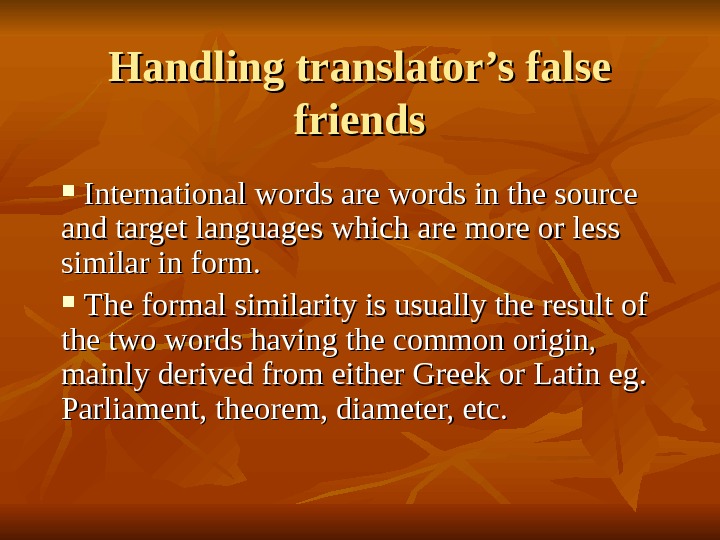
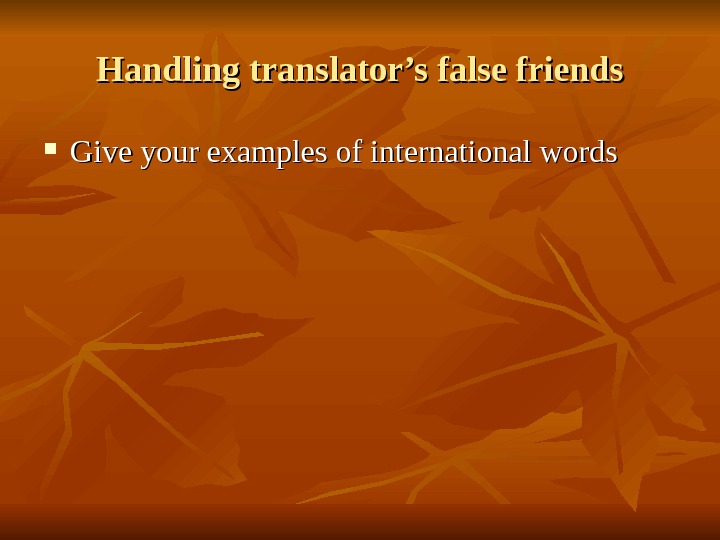
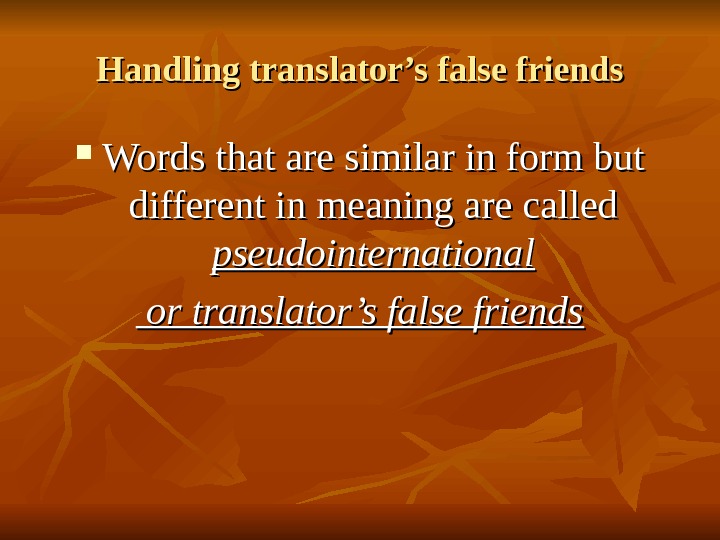





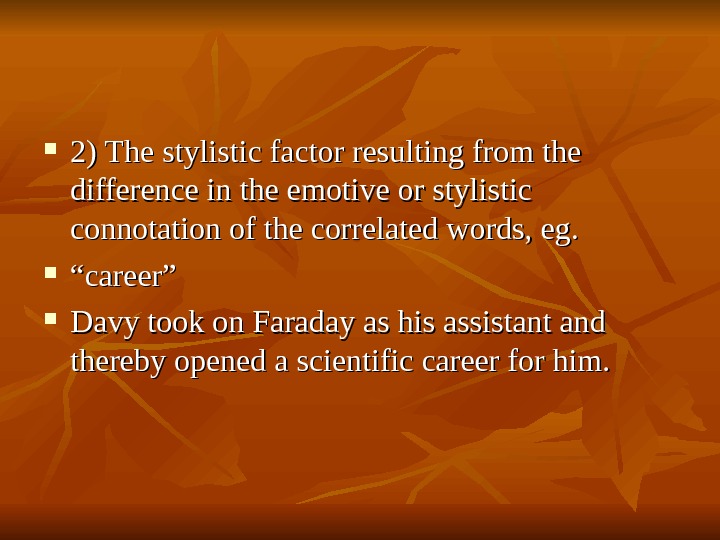
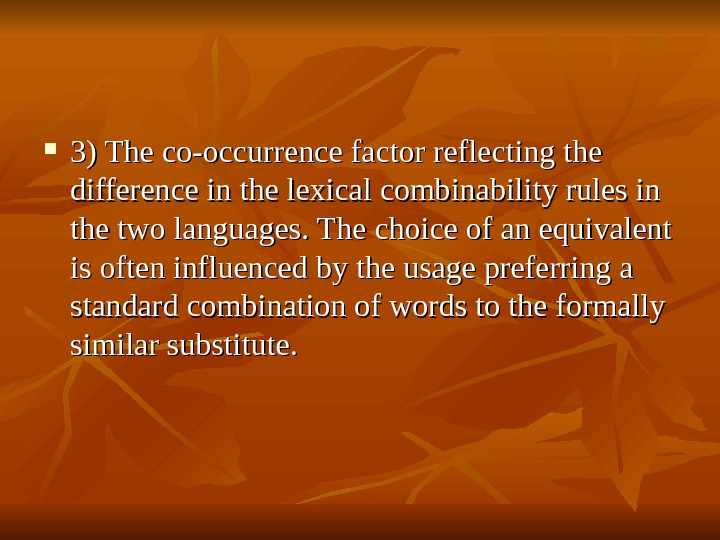

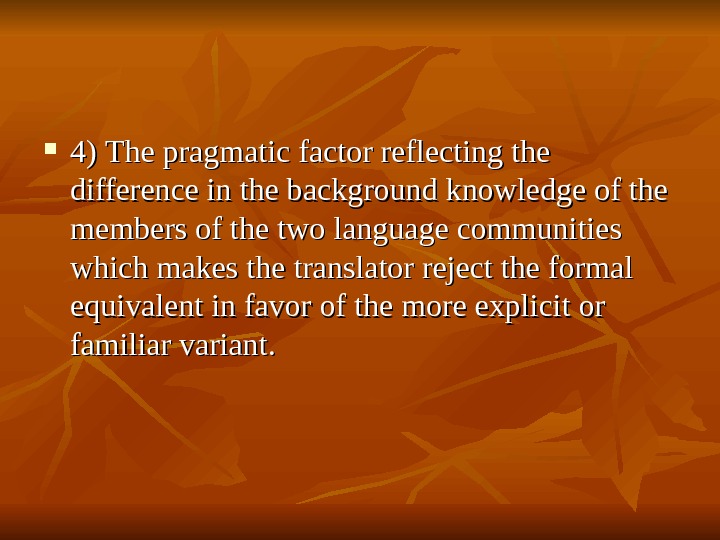



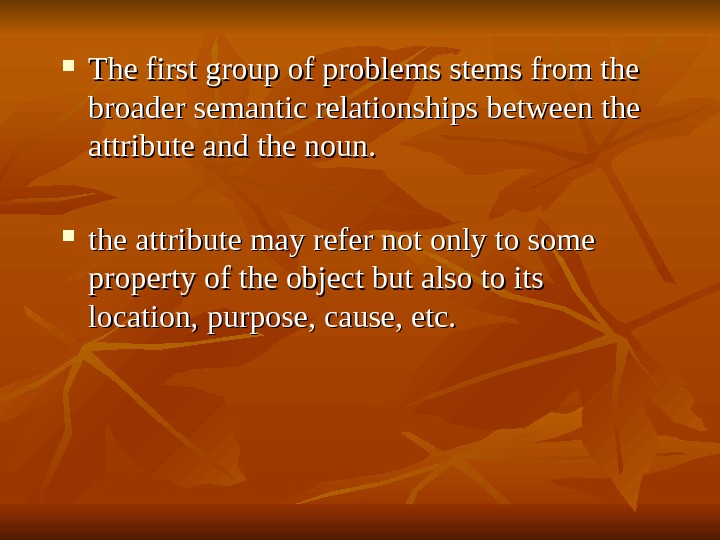
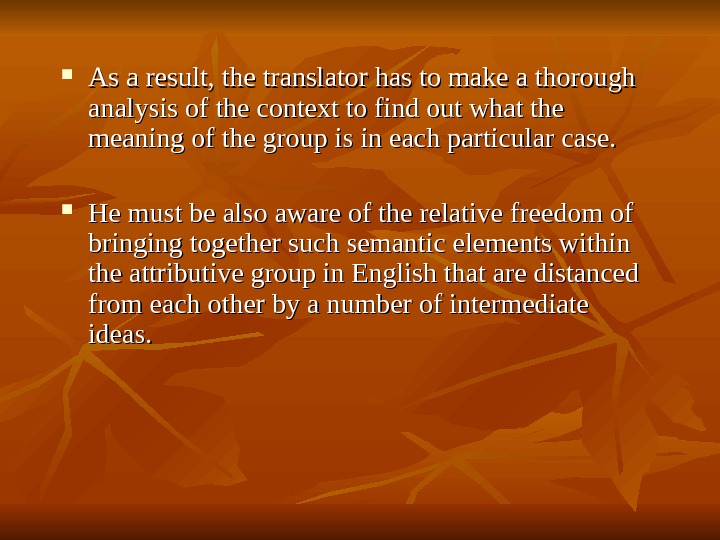

















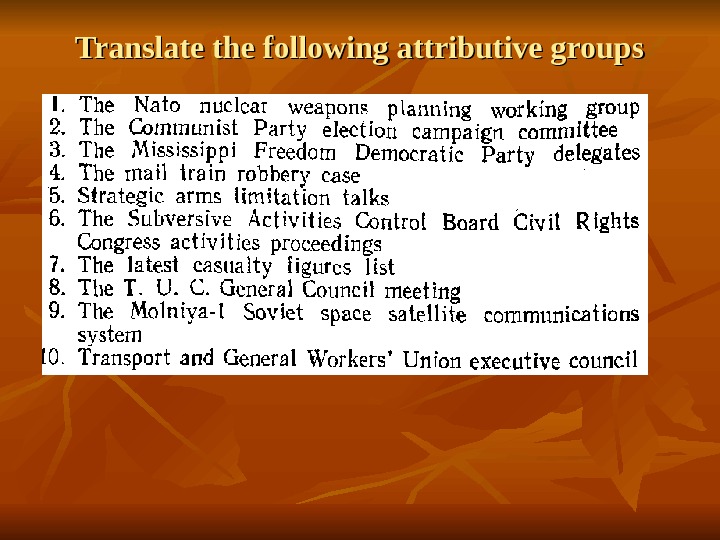
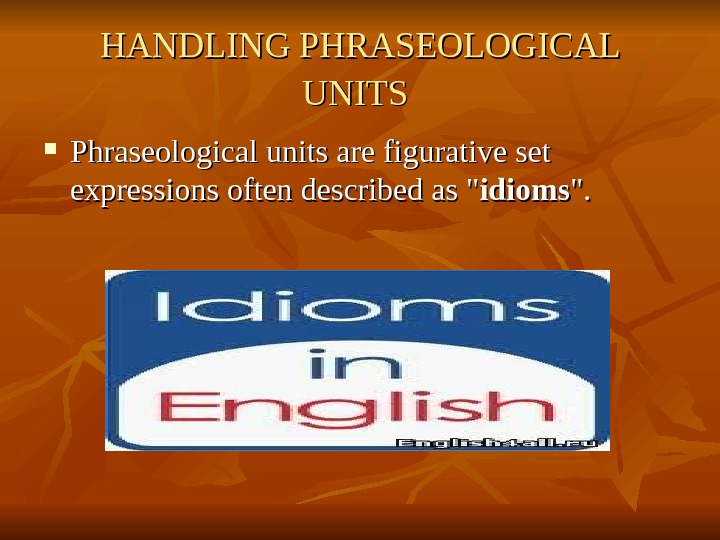





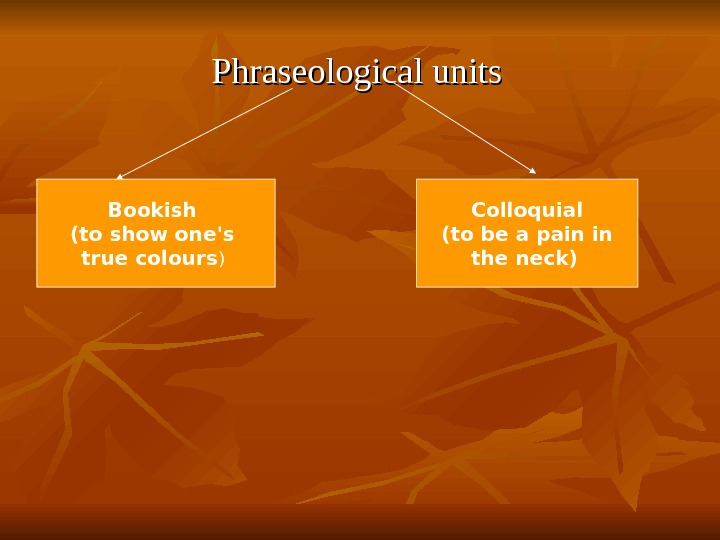








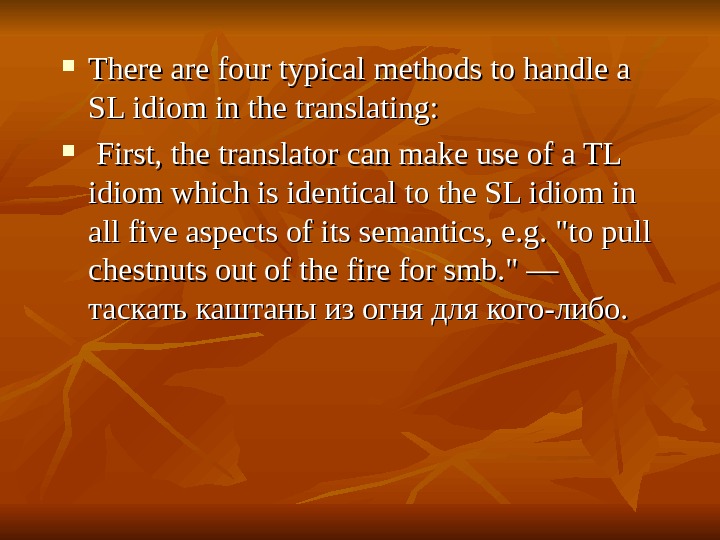


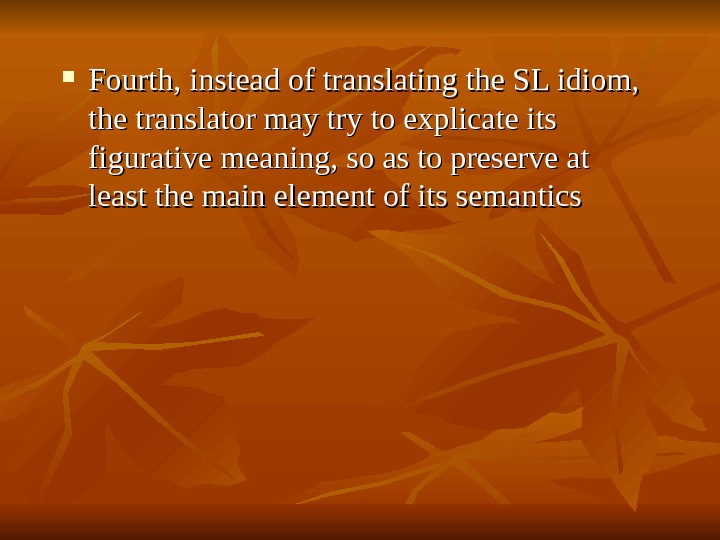














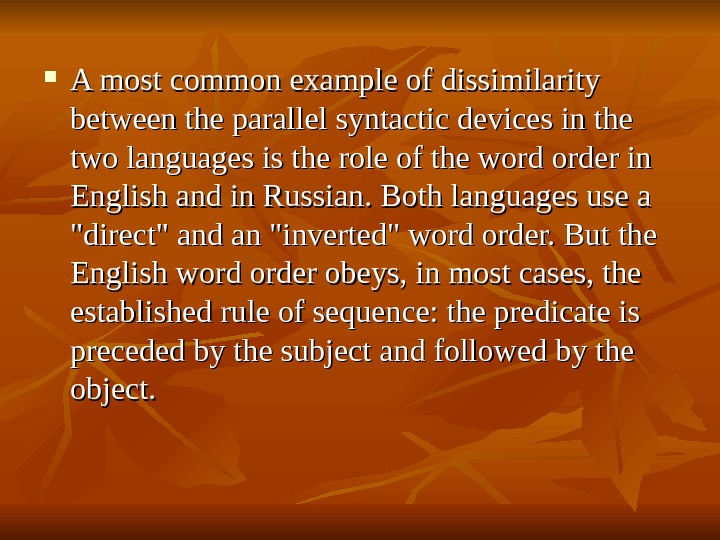


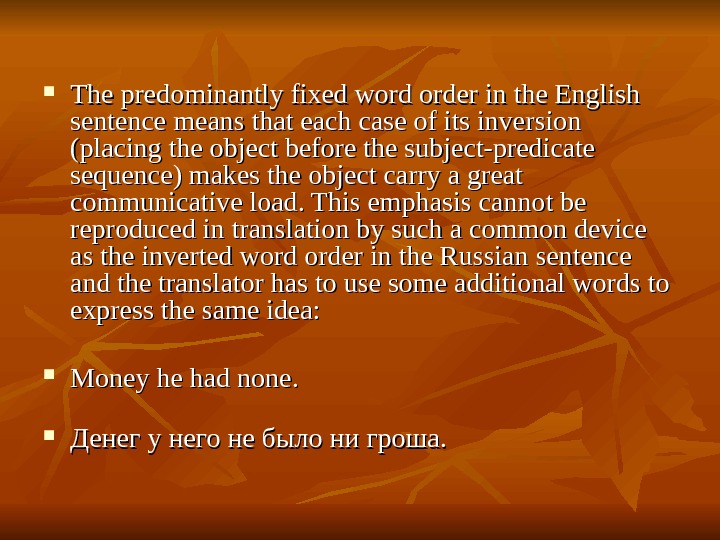


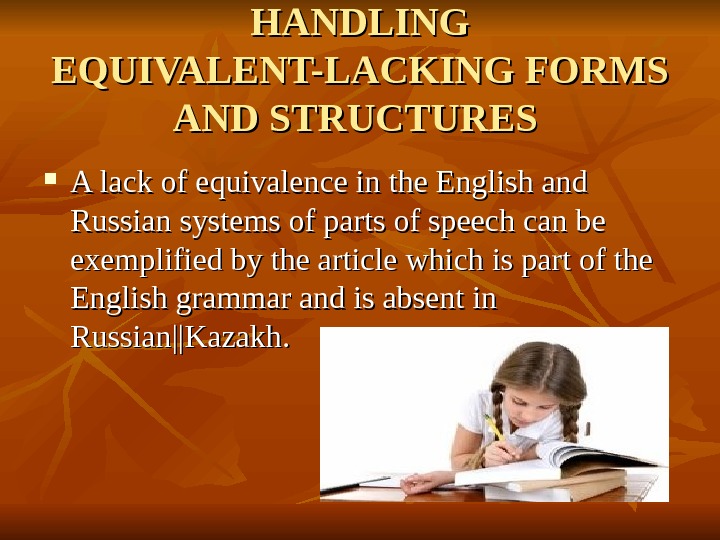


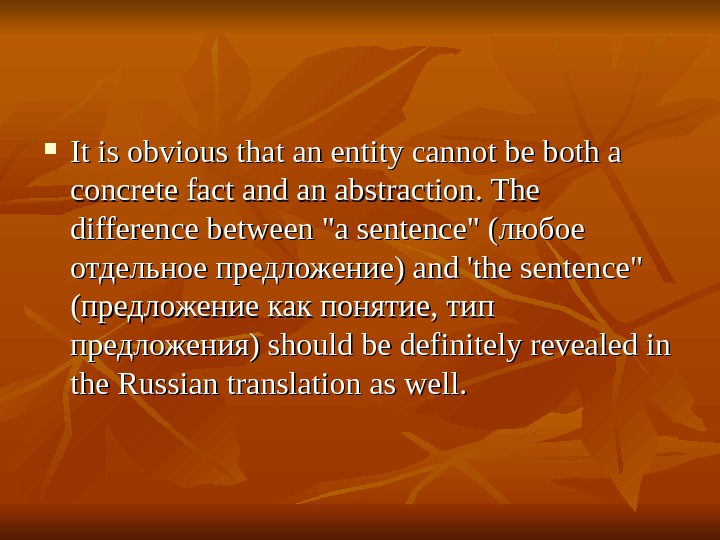
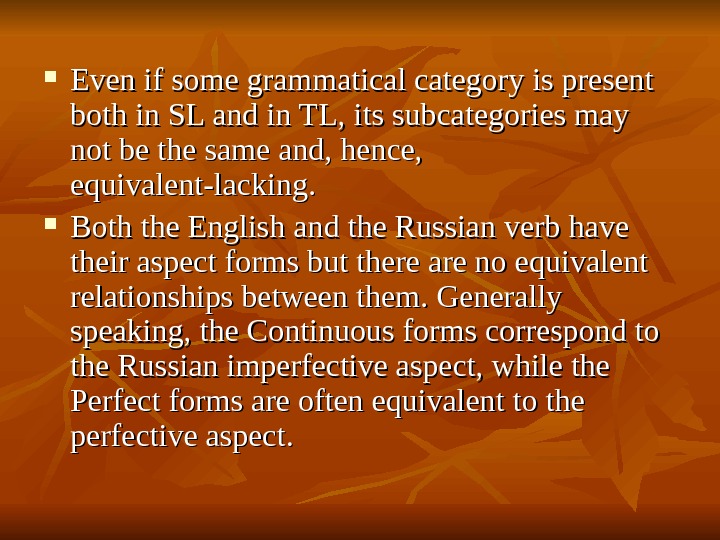
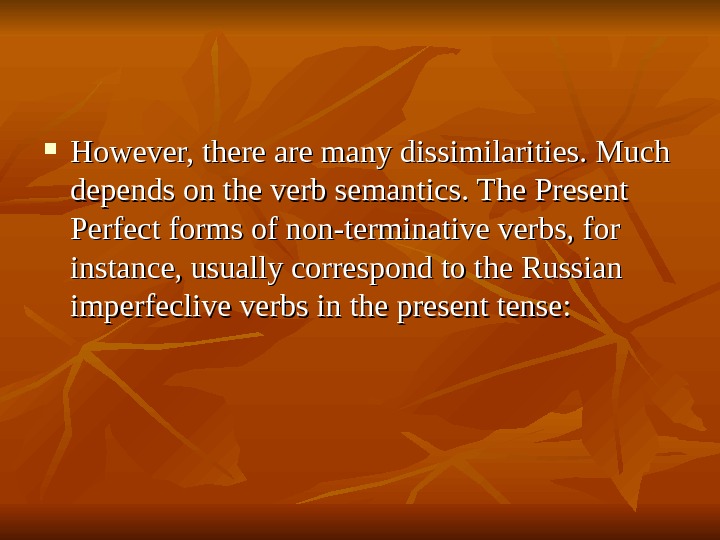






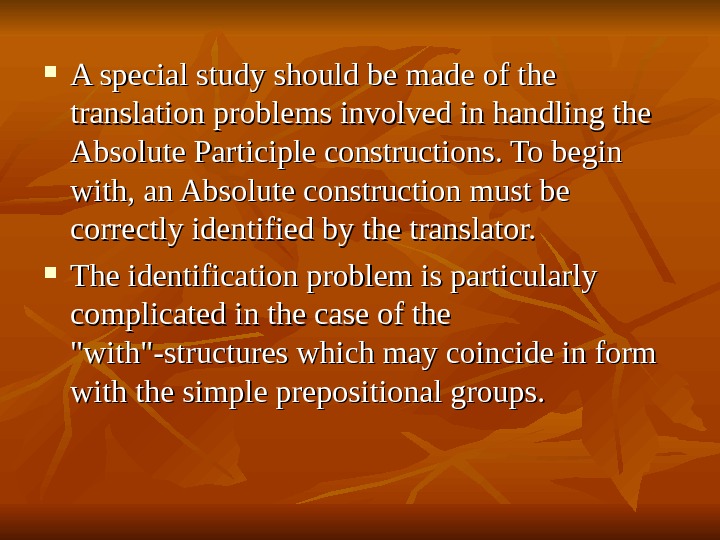

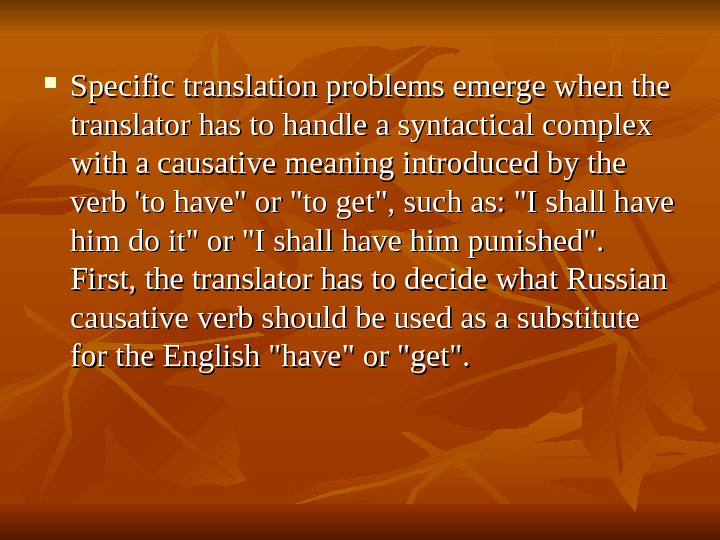







- Размер: 30.4 Mегабайта
- Количество слайдов: 96
Описание презентации Презентация bilingual theory of translatio по слайдам
 Handling translator’s false friends International words are words in the source and target languages which are more or less similar in form. The formal similarity is usually the result of the two words having the common origin, mainly derived from either Greek or Latin eg. Parliament, theorem, diameter, etc.
Handling translator’s false friends International words are words in the source and target languages which are more or less similar in form. The formal similarity is usually the result of the two words having the common origin, mainly derived from either Greek or Latin eg. Parliament, theorem, diameter, etc.
 Handling translator’s false friends Give your examples of international words
Handling translator’s false friends Give your examples of international words
 Handling translator’s false friends Words that are similar in form but different in meaning are called pseudointernational or translator’s false friends
Handling translator’s false friends Words that are similar in form but different in meaning are called pseudointernational or translator’s false friends
 Pseudointernational words Are classified into 2 main groups: 1)1) Words which are similar in form but completely different in meaning, eg. — It lasted the whole decade. — She has a very fine complexion. — Well, he must be a lunatic.
Pseudointernational words Are classified into 2 main groups: 1)1) Words which are similar in form but completely different in meaning, eg. — It lasted the whole decade. — She has a very fine complexion. — Well, he must be a lunatic.
 Handling translator’s false friends 2) There are many pseudointernational words which are not fully interchangeable though there are some common elements in their semantics. .
Handling translator’s false friends 2) There are many pseudointernational words which are not fully interchangeable though there are some common elements in their semantics. .
 Handling translator’s false friends The translator should bear in mind that a number of factors can preclude the possibility of using the formally similar word as an equivalent:
Handling translator’s false friends The translator should bear in mind that a number of factors can preclude the possibility of using the formally similar word as an equivalent:
 1) Semantic factor The semantic factor resulting from the different subsequent development of the words borrowed by the two languages from the same source, eg. Idiom – 1. идиом, 2. диалект (наречие), 3. стиль.
1) Semantic factor The semantic factor resulting from the different subsequent development of the words borrowed by the two languages from the same source, eg. Idiom – 1. идиом, 2. диалект (наречие), 3. стиль.
 South Vietnam was a vast laboratory for the testing of weapons for counter-guerrilla warfare.
South Vietnam was a vast laboratory for the testing of weapons for counter-guerrilla warfare.
 2) The stylistic factor resulting from the difference in the emotive or stylistic connotation of the correlated words, eg. ““ career” Davy took on Faraday as his assistant and thereby opened a scientific career for him.
2) The stylistic factor resulting from the difference in the emotive or stylistic connotation of the correlated words, eg. ““ career” Davy took on Faraday as his assistant and thereby opened a scientific career for him.
 3) The co-occurrence factor reflecting the difference in the lexical combinability rules in the two languages. The choice of an equivalent is often influenced by the usage preferring a standard combination of words to the formally similar substitute.
3) The co-occurrence factor reflecting the difference in the lexical combinability rules in the two languages. The choice of an equivalent is often influenced by the usage preferring a standard combination of words to the formally similar substitute.
 So, a “defect” has a formal counterpart as «дефект» but “theoretical and organizational defects” will be rather ““ подсчеты/есептеулер “. “. A “gesture” may be rendered in another way: The reason for including only minor gestures of reforms in the program… (( жалкое подобие реформ ))
So, a “defect” has a formal counterpart as «дефект» but “theoretical and organizational defects” will be rather ““ подсчеты/есептеулер “. “. A “gesture” may be rendered in another way: The reason for including only minor gestures of reforms in the program… (( жалкое подобие реформ ))
 4) 4) The pragmatic factor reflecting the difference in the background knowledge of the members of the two language communities which makes the translator reject the formal equivalent in favor of the more explicit or familiar variant.
4) 4) The pragmatic factor reflecting the difference in the background knowledge of the members of the two language communities which makes the translator reject the formal equivalent in favor of the more explicit or familiar variant.
 The American Revolution was a close parallel to the wars of national liberation in the colonial and semi-colonial countries. The counter-revolutionary organization was set up to suppress the Negro-poor white alliance that sought to bring democracy in the South in the Reconstruction period.
The American Revolution was a close parallel to the wars of national liberation in the colonial and semi-colonial countries. The counter-revolutionary organization was set up to suppress the Negro-poor white alliance that sought to bring democracy in the South in the Reconstruction period.
 The senator knew Lincoln’s Emancipation Proclamation by heart.
The senator knew Lincoln’s Emancipation Proclamation by heart.
 COLLOCATIONAL ASPECTS OF TRANSLATION ATTRIBUTIVE GROUPS there is a considerable dissimilarity in the semantic structure of attributive groups in English and in Russian. This dissimilarity gives rise to a number of translation problems.
COLLOCATIONAL ASPECTS OF TRANSLATION ATTRIBUTIVE GROUPS there is a considerable dissimilarity in the semantic structure of attributive groups in English and in Russian. This dissimilarity gives rise to a number of translation problems.
 The first group of problems stems from the broader semantic relationships between the attribute and the noun. the attribute may refer not only to some property of the object but also to its location, purpose, cause, etc.
The first group of problems stems from the broader semantic relationships between the attribute and the noun. the attribute may refer not only to some property of the object but also to its location, purpose, cause, etc.
 As a result, the translator has to make a thorough analysis of the context to find out what the meaning of the group is in each particular case. He must be also aware of the relative freedom of bringing together such semantic elements within the attributive group in English that are distanced from each other by a number of intermediate ideas.
As a result, the translator has to make a thorough analysis of the context to find out what the meaning of the group is in each particular case. He must be also aware of the relative freedom of bringing together such semantic elements within the attributive group in English that are distanced from each other by a number of intermediate ideas.
 Thus a resolution submitted by an executive body of an organization may be described as «the Executive resolution» and the majority of votes received by such a resolution will be « « the Executive majority » » . .
Thus a resolution submitted by an executive body of an organization may be described as «the Executive resolution» and the majority of votes received by such a resolution will be « « the Executive majority » » . .
 If a word-for-word translation of the name of the executive body (e. g. the « « Executive Committee » » — — исполнительный комитет ) ) may satisfy the translator, the other two attributive groups will have to be explicated in the Russian translation as ( ( try to guess ))
If a word-for-word translation of the name of the executive body (e. g. the « « Executive Committee » » — — исполнительный комитет ) ) may satisfy the translator, the other two attributive groups will have to be explicated in the Russian translation as ( ( try to guess ))
 « « резолюция , , предложенная исполкомом » » and « « большинство голосов , , поданных заза резолюцию , , которая была предложена исполкомом » »
« « резолюция , , предложенная исполкомом » » and « « большинство голосов , , поданных заза резолюцию , , которая была предложена исполкомом » »
 The second group of problems results from the difficulties in handling multi-member attributive structures. The English-speaking people make wide use of «multi-storied» structures with complicated internal semantic relationships.
The second group of problems results from the difficulties in handling multi-member attributive structures. The English-speaking people make wide use of «multi-storied» structures with complicated internal semantic relationships.
 The tax paid for the right to take part in the election is described as «the poll tax». The states where this tax is collected are «the poll tax states» and the governors of these states are «the poll tax states governors». Now these governors may hold a conference which will be referred to as ‘the poll tax states governors conference» and so on.
The tax paid for the right to take part in the election is described as «the poll tax». The states where this tax is collected are «the poll tax states» and the governors of these states are «the poll tax states governors». Now these governors may hold a conference which will be referred to as ‘the poll tax states governors conference» and so on.
 The semantic relationships within a multi-member group need not be linear. Consider the following sentence: ““ It was the period of the broad western hemisphere and world pre-war united people’s front struggle against fascism” (( analyze the structure of the attr group ))
The semantic relationships within a multi-member group need not be linear. Consider the following sentence: ““ It was the period of the broad western hemisphere and world pre-war united people’s front struggle against fascism” (( analyze the structure of the attr group ))
 Это был период широкой предвоенной борьбы против фашизма за единый народный фронт в Западном полушарии и во всем мире.
Это был период широкой предвоенной борьбы против фашизма за единый народный фронт в Западном полушарии и во всем мире.
 The same goes for attributive groups with latent predication where a whole sentence is used to qualify a noun as its attribute «He was being the boss again, using the its-my-money-now-do-as-you’re-told voice».
The same goes for attributive groups with latent predication where a whole sentence is used to qualify a noun as its attribute «He was being the boss again, using the its-my-money-now-do-as-you’re-told voice».
 Here correspondences can also be described in an indirect way only by stating that the attribute is usually translated into Russian|Kazakh as a separate sentence and that this sentence should be joined to the noun by a short introductory element. Cf. :
Here correspondences can also be described in an indirect way only by stating that the attribute is usually translated into Russian|Kazakh as a separate sentence and that this sentence should be joined to the noun by a short introductory element. Cf. :
 The Judge’s face wore his own I-knew-they-were-guilty-all-along expression.
The Judge’s face wore his own I-knew-they-were-guilty-all-along expression.
 На лице судьи появилось обычное выражение, говорившее: «Я все время знал, что они виновны» .
На лице судьи появилось обычное выражение, говорившее: «Я все время знал, что они виновны» .
 There was a man with a don’t-say-anything-to-me-or-I’ll-contradict- you face. (Ch. Dickens)
There was a man with a don’t-say-anything-to-me-or-I’ll-contradict- you face. (Ch. Dickens)
 Там был человек, на лице которого было написано: что бы вы мне ни говорили, я все равно буду вам противоречить.
Там был человек, на лице которого было написано: что бы вы мне ни говорили, я все равно буду вам противоречить.
 3) An attributive group may be transformed into a similar group with the help of a suffix which is formally attached to the noun but is semantically related to the whole group. Thus «a sound sleeper» may be derived from «sound sleep» or the man belonging to the «Fifth column» may be described as «the Fifth columnist».
3) An attributive group may be transformed into a similar group with the help of a suffix which is formally attached to the noun but is semantically related to the whole group. Thus «a sound sleeper» may be derived from «sound sleep» or the man belonging to the «Fifth column» may be described as «the Fifth columnist».
 As a rule, in the Russian translation the meanings of the original group and of the suffix would be rendered separately, e. g. : человек , , обладающий здоровым (( крепким ) ) сном ( ( крепко спящий человек ), and человек , , принадлежащий кк пятой колонне ( ( член пятой колонны ). ).
As a rule, in the Russian translation the meanings of the original group and of the suffix would be rendered separately, e. g. : человек , , обладающий здоровым (( крепким ) ) сном ( ( крепко спящий человек ), and человек , , принадлежащий кк пятой колонне ( ( член пятой колонны ). ).
 4) As often as not, translating the meaning of an English attributive group into Russian may involve a complete restructuring of the sentence, e. g. : To watch it happen, all within two and a half hours, was a thrilling sight. Нельзя было не восхищаться, наблюдая, как все это происходило на протяжении каких-нибудь двух с половиной часов.
4) As often as not, translating the meaning of an English attributive group into Russian may involve a complete restructuring of the sentence, e. g. : To watch it happen, all within two and a half hours, was a thrilling sight. Нельзя было не восхищаться, наблюдая, как все это происходило на протяжении каких-нибудь двух с половиной часов.
 Translate the following attributive groups 1. hearty eater; 2. practical joker; 3. conscientious objector; 4. sleeping partner; 5. stumbling block; 6. smoking concert;
Translate the following attributive groups 1. hearty eater; 2. practical joker; 3. conscientious objector; 4. sleeping partner; 5. stumbling block; 6. smoking concert;
 Translate the following attributive groups
Translate the following attributive groups
 HANDLING PHRASEOLOGICAL UNITS Phraseological units are figurative set expressions often described as » idioms «.
HANDLING PHRASEOLOGICAL UNITS Phraseological units are figurative set expressions often described as » idioms «.
 FF ive aspects of idioms’ meaning that will influence the translator’s choice of an equivalent in the target language 1. 1. the idiom’s figurative meaning, 2. 2. its literal sense, 3. 3. its emotive character, 4. 4. stylistic register , , 5. 5. national colouring.
FF ive aspects of idioms’ meaning that will influence the translator’s choice of an equivalent in the target language 1. 1. the idiom’s figurative meaning, 2. 2. its literal sense, 3. 3. its emotive character, 4. 4. stylistic register , , 5. 5. national colouring.
 The figurative meaning is the basic element of the idiom’s semantics : : «red tape» means bureaucracy, «to kick the bucket» — to die, «to wash dirty linen in public» — to disclose one’s family troubles to outsiders.
The figurative meaning is the basic element of the idiom’s semantics : : «red tape» means bureaucracy, «to kick the bucket» — to die, «to wash dirty linen in public» — to disclose one’s family troubles to outsiders.
 The figurative meaning is inferred from the literal sense. «Red tape», «to kick the bucket», and «to wash dirty linen in public» also refer, respectively, to a coloured tape, an upset pail and a kind of laundering, though in most cases this aspect is subordinate and serves as a basis for the metaphorical use.
The figurative meaning is inferred from the literal sense. «Red tape», «to kick the bucket», and «to wash dirty linen in public» also refer, respectively, to a coloured tape, an upset pail and a kind of laundering, though in most cases this aspect is subordinate and serves as a basis for the metaphorical use.

 idioms Positive «to kill two birds with one stone» Neutral «Rome was not built in a day» Negative “ to find a mare’s nest»
idioms Positive «to kill two birds with one stone» Neutral «Rome was not built in a day» Negative “ to find a mare’s nest»
 Phraseological units B ookish (to show one’s true colours ) Colloquial (to be a pain in the neck)
Phraseological units B ookish (to show one’s true colours ) Colloquial (to be a pain in the neck)
 Besides, an idiom can be nationally coloured , that is include some words which mark it as the product of a certain nation. For instance, «to set the Thames on fire» and «to carry coals to Newcastle» are unmistakably British.
Besides, an idiom can be nationally coloured , that is include some words which mark it as the product of a certain nation. For instance, «to set the Thames on fire» and «to carry coals to Newcastle» are unmistakably British.
 Ï àê åò
Ï àê åò
 FF actors which complicate the task of adequate identification, understanding and translation of idioms : : — — First, an idiom can be mistaken for a free word combination, especially if its literal sense is not «exotic» (to have butterflies in one’s stomach) but rather trivial (to measure one’s length, to let one’s hair down)
FF actors which complicate the task of adequate identification, understanding and translation of idioms : : — — First, an idiom can be mistaken for a free word combination, especially if its literal sense is not «exotic» (to have butterflies in one’s stomach) but rather trivial (to measure one’s length, to let one’s hair down)
 Second, a SL idiom may be identical in form to a TL idiom but have a different figurative meaning. Thus, the English «to lead smb. by the nose» implies a total domination of one person by the other (cf. the Russian «водить за нос» ) andand «to stretch one’s legs» means to take a stroll (cf. the Russian «протянуть ноги» )
Second, a SL idiom may be identical in form to a TL idiom but have a different figurative meaning. Thus, the English «to lead smb. by the nose» implies a total domination of one person by the other (cf. the Russian «водить за нос» ) andand «to stretch one’s legs» means to take a stroll (cf. the Russian «протянуть ноги» )
 Third, a SL idiom can be wrongly interpreted due to its association with a similar, if not identical TL unit. For instance, «to pull the devil by the tail», that is to be in trouble, may be misunderstood by the translator under the influence of the Russian idioms «держать бога за бороду» or «поймать за хвост жар-птицу»
Third, a SL idiom can be wrongly interpreted due to its association with a similar, if not identical TL unit. For instance, «to pull the devil by the tail», that is to be in trouble, may be misunderstood by the translator under the influence of the Russian idioms «держать бога за бороду» or «поймать за хвост жар-птицу»
 Fourth, a wrong interpretation of a SL idiom may be caused by another SL idiom similar in form and different in meaning. Cf. «to make good time» and «to have a good time»
Fourth, a wrong interpretation of a SL idiom may be caused by another SL idiom similar in form and different in meaning. Cf. «to make good time» and «to have a good time»
 Fifth, a SL idiom may have a broader range of application than its TL counterpart apparently identical in form and meaning. For instance, the English «to get out of hand» is equivalent to the Russian «Oтбиться от рук» and the latter is often used to translate it:
Fifth, a SL idiom may have a broader range of application than its TL counterpart apparently identical in form and meaning. For instance, the English «to get out of hand» is equivalent to the Russian «Oтбиться от рук» and the latter is often used to translate it:
 The children got out of hand while their parents were away. В отсутствии родителей дети совсем отбились от рук. But the English idiom can be used whenever somebody or something gets out of control while the Russian idiom has a more restricted usage: What caused the meeting to get out of hand? Почему собрание прошло так неорганизованно?
The children got out of hand while their parents were away. В отсутствии родителей дети совсем отбились от рук. But the English idiom can be used whenever somebody or something gets out of control while the Russian idiom has a more restricted usage: What caused the meeting to get out of hand? Почему собрание прошло так неорганизованно?
 There are four typical methods to handle a SL idiom in the translating: First, the translator can make use of a TL idiom which is identical to the SL idiom in all five aspects of its semantics, e. g. «to pull chestnuts out of the fire for smb. » — таскать каштаны из огня для кого-либо.
There are four typical methods to handle a SL idiom in the translating: First, the translator can make use of a TL idiom which is identical to the SL idiom in all five aspects of its semantics, e. g. «to pull chestnuts out of the fire for smb. » — таскать каштаны из огня для кого-либо.
 Second, the SL idiom can be translated by a TL idiom which has the same figurative meaning, preserves the same emotive and stylistic characteristics but is based on a different image, that is, has a different literal meaning, e. g. «make hay while the sun shines»
Second, the SL idiom can be translated by a TL idiom which has the same figurative meaning, preserves the same emotive and stylistic characteristics but is based on a different image, that is, has a different literal meaning, e. g. «make hay while the sun shines»
 Third, the SL idiom can be translated by reproducing its form word-for-word in TL, e. g. «People who live in glass houses should not throw stones. » — Люди, живущие в стеклянных домах, не должны бросать камни.
Third, the SL idiom can be translated by reproducing its form word-for-word in TL, e. g. «People who live in glass houses should not throw stones. » — Люди, живущие в стеклянных домах, не должны бросать камни.
 Fourth, instead of translating the SL idiom, the translator may try to explicate its figurative meaning, so as to preserve at least the main element of its semantics
Fourth, instead of translating the SL idiom, the translator may try to explicate its figurative meaning, so as to preserve at least the main element of its semantics
 GRAMMATICAL ASPECTS OF OF TRANSLATION HANDLING EQUIVALENT FORMS AND STRUCTURES Grammaticality is an important feature of speech units. Grammatical forms and structures, however, do not only provide for the correct arrangement of words in the text, they also convey some information which is part of its total contents.
GRAMMATICAL ASPECTS OF OF TRANSLATION HANDLING EQUIVALENT FORMS AND STRUCTURES Grammaticality is an important feature of speech units. Grammatical forms and structures, however, do not only provide for the correct arrangement of words in the text, they also convey some information which is part of its total contents.
 They reveal the semantic relationships between the words, clauses and sentences in the text, they can make prominent some. part of the contents that is of particular significance for the communicants.
They reveal the semantic relationships between the words, clauses and sentences in the text, they can make prominent some. part of the contents that is of particular significance for the communicants.
 The syntactic structuring of the text is an important characteristics identifying either the genre of the text or its author’s style.
The syntactic structuring of the text is an important characteristics identifying either the genre of the text or its author’s style.
 In many cases, however, equivalence in translation can be best achieved if the translator does not try to mirror the grammatical forms in the source text. There are no permanent grammatical equivalents and the translator can choose between the parallel forms and various grammatical transformations. He may opt for the latter for there is never an absolute identity between the meaning and usage of the parallel forms in SL and TL.
In many cases, however, equivalence in translation can be best achieved if the translator does not try to mirror the grammatical forms in the source text. There are no permanent grammatical equivalents and the translator can choose between the parallel forms and various grammatical transformations. He may opt for the latter for there is never an absolute identity between the meaning and usage of the parallel forms in SL and TL.
 For instance, both English and Russian verbs have their infinitive forms. The analogy, however, does not preclude a number of formal and functional differences.
For instance, both English and Russian verbs have their infinitive forms. The analogy, however, does not preclude a number of formal and functional differences.
 We may recall that the English infinitive has perfect forms, both active and passive, indefinite and continuous, which are absent in the respective grammatical category in Russian.
We may recall that the English infinitive has perfect forms, both active and passive, indefinite and continuous, which are absent in the respective grammatical category in Russian.
 The idea of priority or non-performed action expressed by the Perfect Infinitive is not present in the meaning of the Russian Infinitive and has to be rendered in translation by some other means.
The idea of priority or non-performed action expressed by the Perfect Infinitive is not present in the meaning of the Russian Infinitive and has to be rendered in translation by some other means.
 Cf. ‘The train seems to arrive at 5. » — Поезд, видимо, приходит в 5. and ‘The train seems to have arrived at 5. » — Поезд, видимо, пришел в 5. 5.
Cf. ‘The train seems to arrive at 5. » — Поезд, видимо, приходит в 5. and ‘The train seems to have arrived at 5. » — Поезд, видимо, пришел в 5. 5.
 A dissimilarity of the English and Russian Infinitives can be also found in the functions they perform in the sentence. Note should be taken, for example, of the Continuative Infinitive which in English denotes an action following that indicated by the Predicate:
A dissimilarity of the English and Russian Infinitives can be also found in the functions they perform in the sentence. Note should be taken, for example, of the Continuative Infinitive which in English denotes an action following that indicated by the Predicate:
 Parliament was dissolved, not to meet again for eleven years.
Parliament was dissolved, not to meet again for eleven years.
 Не came home to find his wife gone.
Не came home to find his wife gone.
 Парламент был распущен и не созывался в течение 11 лет. Он вернулся домой и обнаружил, что жена ушла.
Парламент был распущен и не созывался в течение 11 лет. Он вернулся домой и обнаружил, что жена ушла.
 A similar difference can be observed if one compares the finite forms of the verb in English and in Russian. The English and the Russian verbs both have active and passive forms, but in English the passive forms are more numerous and are more often used. As a result, the meaning of the passive verb in the source text is often rendered by an active verb in the translation:
A similar difference can be observed if one compares the finite forms of the verb in English and in Russian. The English and the Russian verbs both have active and passive forms, but in English the passive forms are more numerous and are more often used. As a result, the meaning of the passive verb in the source text is often rendered by an active verb in the translation:
 This port can be entered by big ships only during the tide.
This port can be entered by big ships only during the tide.
 A most common example of dissimilarity between the parallel syntactic devices in the two languages is the role of the word order in English and in Russian. Both languages use a «direct» and an «inverted» word order. But the English word order obeys, in most cases, the established rule of sequence: the predicate is preceded by the subject and followed by the object.
A most common example of dissimilarity between the parallel syntactic devices in the two languages is the role of the word order in English and in Russian. Both languages use a «direct» and an «inverted» word order. But the English word order obeys, in most cases, the established rule of sequence: the predicate is preceded by the subject and followed by the object.
 This order of words is often changed in the Russian translation since in Russian the word order is used to show the communicative load of different parts of the sentence, the elements conveying new information (the rheme) leaning towards the end of non-emphatic sentences. .
This order of words is often changed in the Russian translation since in Russian the word order is used to show the communicative load of different parts of the sentence, the elements conveying new information (the rheme) leaning towards the end of non-emphatic sentences. .
 Thus if the English sentence «My son entered the room» is intended to inform us who entered the room, its Russian equivalent will be «В комнату вошел мой сын» but in case its purpose is to tell us what my son did, the word order will be preserved: «Мой сын вошел в комнату» .
Thus if the English sentence «My son entered the room» is intended to inform us who entered the room, its Russian equivalent will be «В комнату вошел мой сын» but in case its purpose is to tell us what my son did, the word order will be preserved: «Мой сын вошел в комнату» .
 The predominantly fixed word order in the English sentence means that each case of its inversion (placing the object before the subject-predicate sequence) makes the object carry a great communicative load. This emphasis cannot be reproduced in translation by such a common device as the inverted word order in the Russian sentence and the translator has to use some additional words to express the same idea: Money he had none. Денег у него не было ни гроша.
The predominantly fixed word order in the English sentence means that each case of its inversion (placing the object before the subject-predicate sequence) makes the object carry a great communicative load. This emphasis cannot be reproduced in translation by such a common device as the inverted word order in the Russian sentence and the translator has to use some additional words to express the same idea: Money he had none. Денег у него не было ни гроша.
 I. Translate the following sentences with the special attention to the choice of Russian equivalents to render the meaning of the English infinitives. 1. The people of Roumania lived in a poverty difficult to imagine. 2. The Security Council is given the power to decide when a threat to peace exists without waiting for the war to break out. 3. The general was a good man to keep away from. 4. This is a nice place to live in. 5. He stopped the car for me to buy some cigarettes. 6. Jack London was the best short-story writer in his country to arise after Edgar Рое.
I. Translate the following sentences with the special attention to the choice of Russian equivalents to render the meaning of the English infinitives. 1. The people of Roumania lived in a poverty difficult to imagine. 2. The Security Council is given the power to decide when a threat to peace exists without waiting for the war to break out. 3. The general was a good man to keep away from. 4. This is a nice place to live in. 5. He stopped the car for me to buy some cigarettes. 6. Jack London was the best short-story writer in his country to arise after Edgar Рое.
 П. Note the way the meaning of the English passive forms is rendered in your translation of the following sentences. 1. The Prime-Minister was forced to admit in the House of Commons that Britain had rejected the Argentine offer to negotiate the Folklands’ crisis. 2. The amendment was rejected by the majority of the Security Council. 3. He rose to speak and was warmly greeted by the audience. 4. The treaty is reported to have been ratified by all participants.
П. Note the way the meaning of the English passive forms is rendered in your translation of the following sentences. 1. The Prime-Minister was forced to admit in the House of Commons that Britain had rejected the Argentine offer to negotiate the Folklands’ crisis. 2. The amendment was rejected by the majority of the Security Council. 3. He rose to speak and was warmly greeted by the audience. 4. The treaty is reported to have been ratified by all participants.
 HANDLING EQUIVALENT-LACKING FORMS AND STRUCTURES A lack of equivalence in the English and Russian systems of parts of speech can be exemplified by the article which is part of the English grammar and is absent in Russian ||Kazakh. .
HANDLING EQUIVALENT-LACKING FORMS AND STRUCTURES A lack of equivalence in the English and Russian systems of parts of speech can be exemplified by the article which is part of the English grammar and is absent in Russian ||Kazakh. .
 As a rule, English articles are not translated into Russian for their meaning is expressed by various contextual elements and needn’t be reproduced separately. But in some cases there is a need to translate the meaning of the English article.
As a rule, English articles are not translated into Russian for their meaning is expressed by various contextual elements and needn’t be reproduced separately. But in some cases there is a need to translate the meaning of the English article.
 Consider the following linguistic statement: ‘To put it in terms of linguistics: a sentence is a concrete fact, the result of an actual act of speech. The sentence is an abstraction. So a sentence is always a unit of speech; the sentence of a definite language is an element of that language. «
Consider the following linguistic statement: ‘To put it in terms of linguistics: a sentence is a concrete fact, the result of an actual act of speech. The sentence is an abstraction. So a sentence is always a unit of speech; the sentence of a definite language is an element of that language. «
 It is obvious that an entity cannot be both a concrete fact and an abstraction. The difference between «a sentence» (любое отдельное предложение) and ‘the sentence» (предложение как понятие, тип предложения) should be definitely revealed in the Russian translation as well.
It is obvious that an entity cannot be both a concrete fact and an abstraction. The difference between «a sentence» (любое отдельное предложение) and ‘the sentence» (предложение как понятие, тип предложения) should be definitely revealed in the Russian translation as well.
 Even if some grammatical category is present both in SL and in TL, its subcategories may not be the same and, hence, equivalent-lacking. Both the English and the Russian verb have their aspect forms but there are no equivalent relationships between them. Generally speaking, the Continuous forms correspond to the Russian imperfective aspect, while the Perfect forms are often equivalent to the perfective aspect.
Even if some grammatical category is present both in SL and in TL, its subcategories may not be the same and, hence, equivalent-lacking. Both the English and the Russian verb have their aspect forms but there are no equivalent relationships between them. Generally speaking, the Continuous forms correspond to the Russian imperfective aspect, while the Perfect forms are often equivalent to the perfective aspect.
 However, there are many dissimilarities. Much depends on the verb semantics. The Present Perfect forms of non-terminative verbs, for instance, usually correspond to the Russian imperfeclive verbs in the present tense:
However, there are many dissimilarities. Much depends on the verb semantics. The Present Perfect forms of non-terminative verbs, for instance, usually correspond to the Russian imperfeclive verbs in the present tense:
 I have lived in Moscow since 1940. 102 Я живу в Москве с 1940 г.
I have lived in Moscow since 1940. 102 Я живу в Москве с 1940 г.
 The Past Indefinite forms may correspond either to the perfective or to the imperfective Russian forms and the choice is largely prompted by the context. Cf. :
The Past Indefinite forms may correspond either to the perfective or to the imperfective Russian forms and the choice is largely prompted by the context. Cf. :
 After supper he usually smoked in the garden. После ужина он обычно курил в саду.
After supper he usually smoked in the garden. После ужина он обычно курил в саду.
 After supper he smoked a cigarette in the garden and went to bed. После ужина он выкурил в саду сигарету и пошел спать.
After supper he smoked a cigarette in the garden and went to bed. После ужина он выкурил в саду сигарету и пошел спать.
 The Past Pefect forms may also be indifferent to these aspective nuances, referring to an action prior to some other action or a past moment. Cf. :
The Past Pefect forms may also be indifferent to these aspective nuances, referring to an action prior to some other action or a past moment. Cf. :
 I hoped he had read that book. (а) Я надеялся, что он читал эту книгу, (б) Я надеялся, что он (уже) прочитал эту книгу.
I hoped he had read that book. (а) Я надеялся, что он читал эту книгу, (б) Я надеялся, что он (уже) прочитал эту книгу.
 A special study should be made of the translation problems involved in handling the Absolute Participle constructions. To begin with, an Absolute construction must be correctly identified by the translator. The identification problem is particularly complicated in the case of the «with»-structures which may coincide in form with the simple prepositional groups.
A special study should be made of the translation problems involved in handling the Absolute Participle constructions. To begin with, an Absolute construction must be correctly identified by the translator. The identification problem is particularly complicated in the case of the «with»-structures which may coincide in form with the simple prepositional groups.
 The phrase «How can you play with your brother lying sick in bed» can be understood in two different ways: as an Absolute construction and then its Russian equivalent will be «Как тебе не стыдно играть, когда твой брат лежит больной (в постели)» or as a prepositional group which should be translated as «Как тебе не стыдно играть с твоим больным братом» .
The phrase «How can you play with your brother lying sick in bed» can be understood in two different ways: as an Absolute construction and then its Russian equivalent will be «Как тебе не стыдно играть, когда твой брат лежит больной (в постели)» or as a prepositional group which should be translated as «Как тебе не стыдно играть с твоим больным братом» .
 Specific translation problems emerge when the translator has to handle a syntactical complex with a causative meaning introduced by the verb ‘to have» or «to get», such as: «I shall have him do it» or «I shall have him punished». First, the translator has to decide what Russian causative verb should be used as a substitute for the English «have» or «get».
Specific translation problems emerge when the translator has to handle a syntactical complex with a causative meaning introduced by the verb ‘to have» or «to get», such as: «I shall have him do it» or «I shall have him punished». First, the translator has to decide what Russian causative verb should be used as a substitute for the English «have» or «get».
 Depending on the respective status of the persons involved, the phrase «I shall have him do it» may be rendered into Russian as «Я заставлю его (прикажу ему, велю ему, попрошу его и т. п. ) сделать это» or even «Я добьюсь (позабочусь о том, устрою так и т. п. ), чтобы он это сделал» .
Depending on the respective status of the persons involved, the phrase «I shall have him do it» may be rendered into Russian as «Я заставлю его (прикажу ему, велю ему, попрошу его и т. п. ) сделать это» or even «Я добьюсь (позабочусь о том, устрою так и т. п. ), чтобы он это сделал» .
 Second, the translator must be aware that such complexes are polysemantic and may be either causative or non-causative. The phrase ‘The general had his horse killed» may refer to two different situations.
Second, the translator must be aware that such complexes are polysemantic and may be either causative or non-causative. The phrase ‘The general had his horse killed» may refer to two different situations.
 Either the horse was killed by the general’s order (Генерал приказал убить свою лошадь) or he was killed in combat and the general was not the initiator of the act but the sufferer (Под ним убили лошадь). An error in the translator’s judgement will result in a distorted translation variant.
Either the horse was killed by the general’s order (Генерал приказал убить свою лошадь) or he was killed in combat and the general was not the initiator of the act but the sufferer (Под ним убили лошадь). An error in the translator’s judgement will result in a distorted translation variant.
 Many equivalent-lacking structures result from a non-causative verb used in the typical causative complex. Preserving its basic meaning the verb acquires an additional causative sense. Cf. : They laughed merrily. Они весело смеялись. They laughed him out of the room. Они так смеялись над ним, что он убежал из комнаты.
Many equivalent-lacking structures result from a non-causative verb used in the typical causative complex. Preserving its basic meaning the verb acquires an additional causative sense. Cf. : They laughed merrily. Они весело смеялись. They laughed him out of the room. Они так смеялись над ним, что он убежал из комнаты.
 In such cases the translator has to choose among different ways of expressing causative relationships in TL. Cf. : The US Administration wanted to frighten the people into accepting the militarization of the country. . .
In such cases the translator has to choose among different ways of expressing causative relationships in TL. Cf. : The US Administration wanted to frighten the people into accepting the militarization of the country. . .
 Администрация США стремилась запугать народ, чтобы заставить его согласиться на милитаризацию страны. Не talked me into joining him. Он уговорил меня присоединиться к нему. It should be noted that such English structures are usually formed with the prepositions «into» and «out of as in the above examples
Администрация США стремилась запугать народ, чтобы заставить его согласиться на милитаризацию страны. Не talked me into joining him. Он уговорил меня присоединиться к нему. It should be noted that such English structures are usually formed with the prepositions «into» and «out of as in the above examples
 HANDLING MODAL FORMS
HANDLING MODAL FORMS

